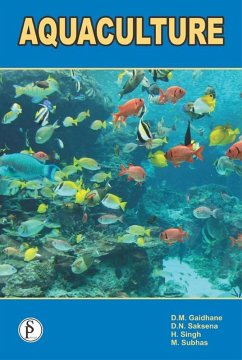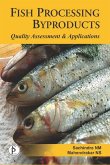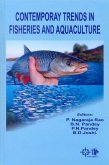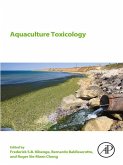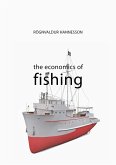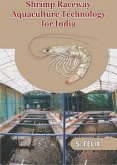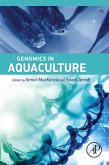'Aquaculture' is an important Division of the Fishery Science and Zoology. It is concerned with the agriculture underwater. Considering the growth of this sector, aquaculture is an alternative source to meet the current and future need of the growing population for the fish food. Aquaculture is being a part of the syllabi of many Colleges and Universities, but, no compact and informative book is available which considers the important aspects of the aquaculture. By keeping this view in mind, the present book is designed. The frame-work of this book is strictly based upon the UGC curriculum. The book Aquaculture consists of 40 chapters and divided into two parts, viz., Part-I: Aquaculture. It consists 20 chapters concerned with aquaculture activities such as hydrobiology of a freshwater pond, planning and construction of freshwater fish farm, food and feeding habits of culturable fishes, indigenous and exotic carps, fish breeding, pre-and post-stocking management of ponds, nutritional requirement of culturable carps, transportation of fish seed, different systems of aquaculture, reservoir fisheries, integrated aquaculture, sewage fed fisheries, and coldwater fisheries. Part-II: Fish Pathology, Fish Genetics, and Aquaculture in rural economy. This part is also divided into 20 chapters. In this part includes chapters on fish nutrition, fish preservation, fish food poisoning, fish products and by-products, fish pathology, fish genetics and genetic engineering; culture of prawns, crabs, pearl, oyster and sea weed; fishery economics, fisheries co-operatives, fisheries extension, remote sensing and fisheries, etc. Book language is simple and easy to understand. The book is useful for the students of Under-graduate and Post-graduate Courses in Fishery Science, Aquaculture and Zoology at various Colleges and Universities. It is also helpful for Aquaculturist, Zoologists and Environmentalists.
Dieser Download kann aus rechtlichen Gründen nur mit Rechnungsadresse in A, B, BG, CY, CZ, D, DK, EW, E, FIN, F, GR, HR, H, IRL, I, LT, L, LR, M, NL, PL, P, R, S, SLO, SK ausgeliefert werden.

